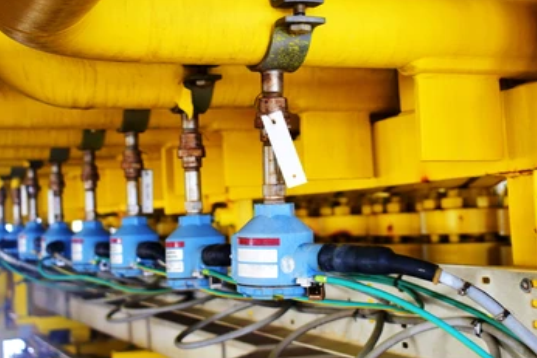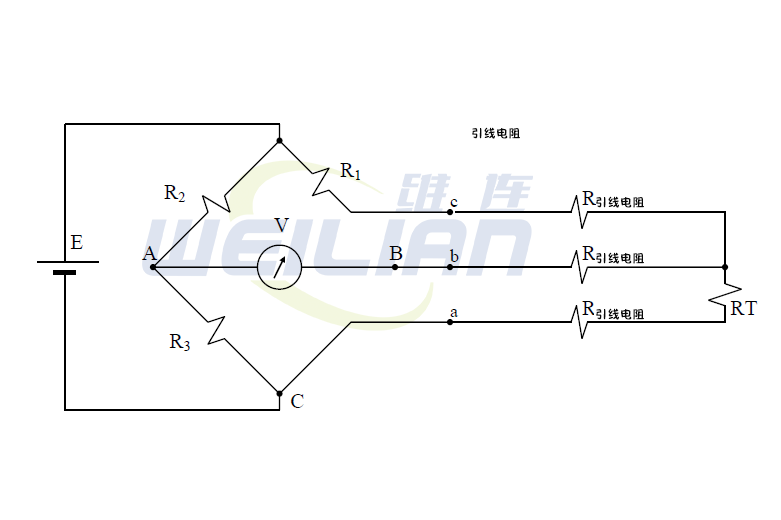

The impact of ambient temperature on RTD temperature sensor
The impact of ambient temperature on 3 line RTD
If temperature measurement is required where the installation position is installed at a certain distance from the RTD, the ambient temperature will adversely affect the integrity of the measurement.
The reason is that connecting the RTD temperature sensor to the transmitter lead will have its own resistance, and this resistor will change with the change of the ambient temperature. If a lead with a very low resistance is used, the error introduced by the lead resistance can certainly minimize.

A clever way to solve the problem of the lead resistance is the Third Line method, as shown in the figure above. The Third Line method is trying to eliminate the effects of the lead resistance by introducing the same resistance in the two branches (wire C and A) of the Whist Tong bridge.
The three -line method is widely used in industrial RTD temperature sensors. The three leads A, B, and C are connected to the RTD temperature sensor. The resistance of the temperature sensor A and C must match. This method assumes that the instrument is a high impedance device, and there is basically no current flow in Line B. Line B is only used as a voltage detection lead.
Please read another: Mathematics proof of RTD temperature effect
Environmental temperature on 4 -line RTD temperature sensor
The four -line method shown in the figure below reduces many problems related to the Whist Tongqiao.
Do not use the Whist Tong bridge configuration, but use current sources to supply constant current I to RTD temperature sensors through wire A and D.
The high impedance voltage meter M measures the voltage generated on the RTD temperature sensor through the wire B and C.

The measured voltage is proportional to the resistance of the RTD temperature sensor, so only need to convert the resistance to temperature. Wire B and C are only used as voltage sensing wires, and M is a high impedance instrument. There is almost no current flow in the wire B and C. Therefore, there is no voltage drop in these wires, so there is no wire resistor error in the measurement.
The four -line method is that we need one more line than the three -line method, but if we fully care about the accuracy of temperature measurement, the price pays is small. However, the four -line method is becoming more and more popular in the industry.
Please read another: How to measure temperature

